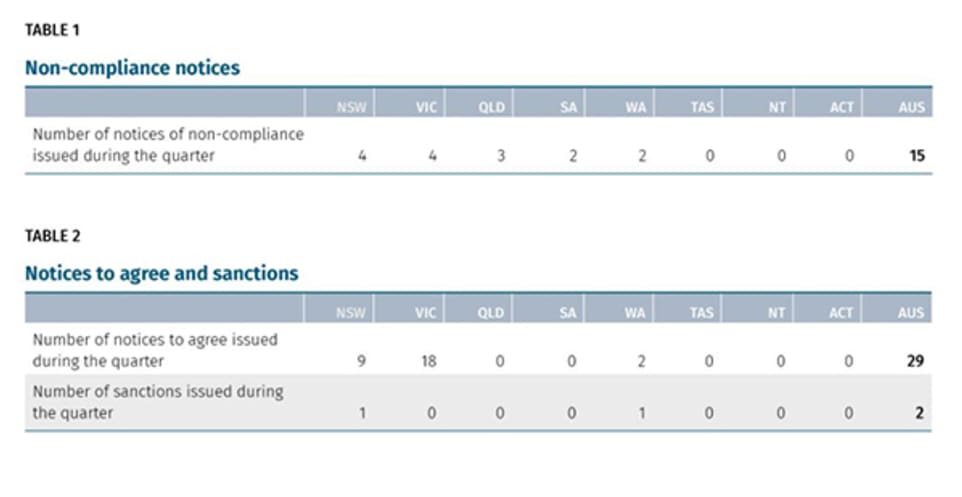The Aged Care Quality and Safety Commission’s latest Sector Performance Report for July to September is out – and it shows the regulator has been cracking down on aged care providers during the peak of Victoria’s second coronavirus wave and its aftermath.
You can check out the report here.
As we covered here, the Commission announced it would recommence site visits in June after earlier suspending in-person visits in mid-March,
But the data shows most of the regulator’s work has been off-site.
There were 5,577 assessment contact activities over the quarter, but only 1,005 of those involved an on-site visit.
The Commission also carried out 4,688 infection control monitoring activities with a further 100 spot checks still being conducted each week.
29 Notices of Requirement to Agree (NTAs) were also issued, along with two sanctions.
An NTA is issued where the Commission identifies an immediate and severe risk to consumers is identified in the context of a COVID-19 outbreak in a residential aged care service to require the provider to immediately take action to manage risks associated with the outbreak.
This compares to three NTAs issued from April to June and two between January and March.
As you would expect given it was the site of the majority of the outbreaks in residential care, Victoria received the lion’s share of NTA’s with 18 handed out while NSW facilities received nine.
Interestingly, there were only 1,859 complaints – made up of 4,181 issues – received about residential aged care services compared with 2,119 between April and June and 1,414 between January and March.
That’s just 1.4 per aged care service across Australia at a time when COVID was dominating residential care.
You can see this in the issues that are the subject of complaints – prior to COVID-19, medication management was the most frequently raised issue.
Now it is infection control, which accounted for 406 issues, followed by 241 about personnel numbers, 237 about family consultation and representatives, 186 about medication management and 181 about poor communication.










